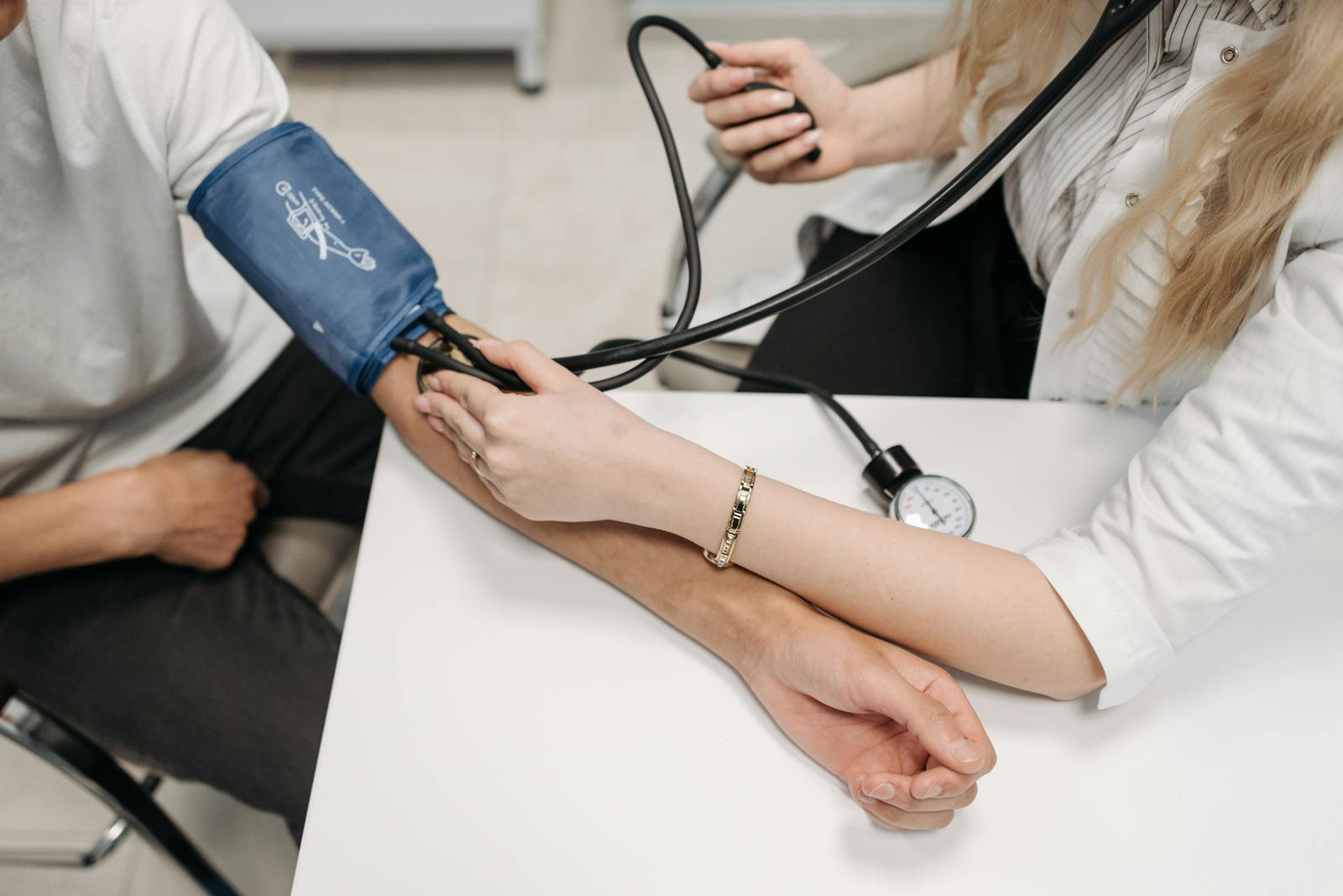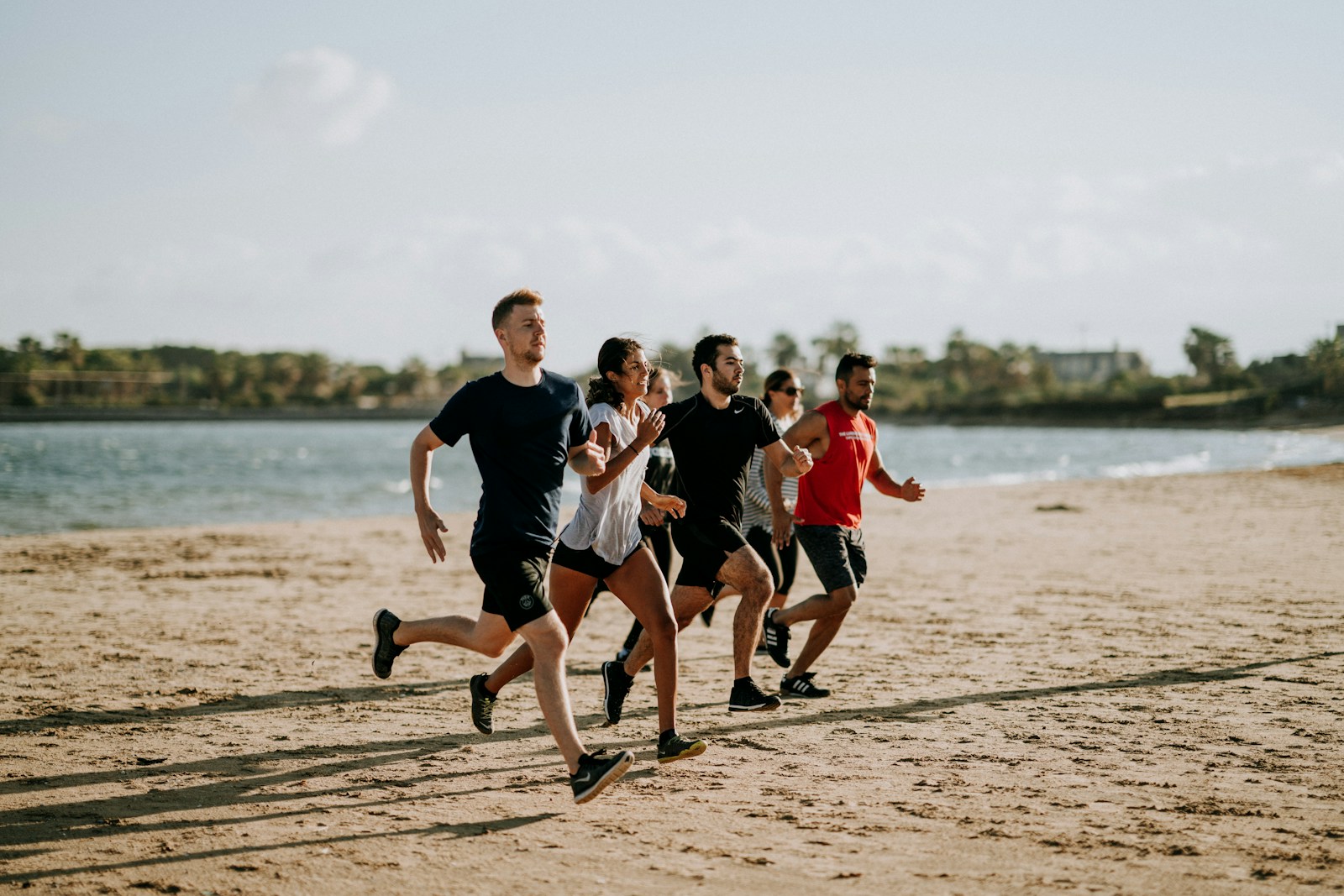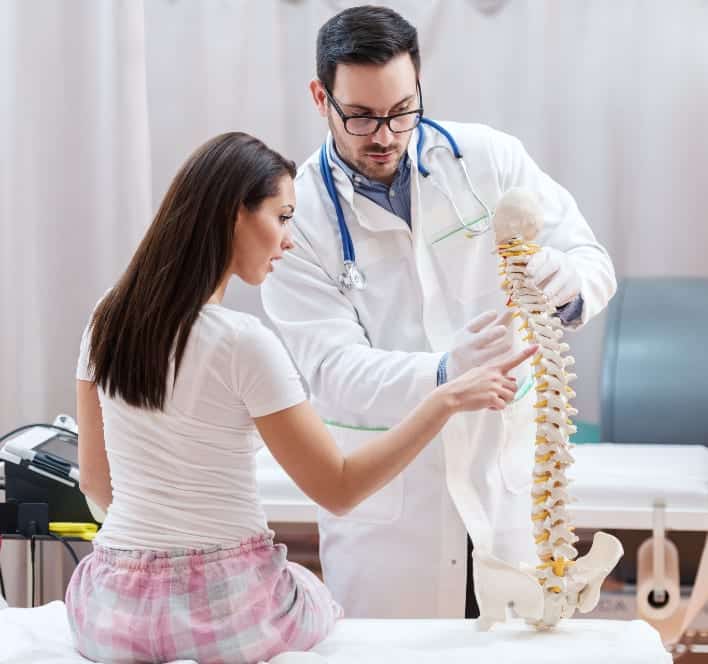Lumbar Radiculopathy, a condition marked by nerve root impingement in the lower back, is a pervasive issue that affects a significant portion of the global population. The complexity of its etiology, encompassing herniated discs to spinal stenosis, coupled with the range of symptoms from mild discomfort to extreme pain, presents a challenging landscape for effective management. The critical role that early diagnosis and non-surgical treatments play in mitigating this condition’s effects invites a deeper exploration of the topic. In the subsequent discourse, we will dissect the intricacies of Lumbar Radiculopathy, focusing on its causes, diagnosis, and the potential role of lifestyle modifications in its management.
Understanding Lumbar Radiculopathy
Delving into the intricacies of Lumbar Radiculopathy, it is a complex condition characterized by nerve root impingement or inflammation in the lower back, leading to a range of symptoms including pain, numbness, or weakness radiating along the affected nerve. These symptoms often mimic those of other conditions, leading to Radiculopathy Misconceptions which can delay accurate diagnosis and effective treatment.
This highlights the importance of Patient Education in understanding the specifics of Lumbar Radiculopathy. Thorough patient education not only aids in the timely diagnosis but also assists in the management of the condition, ensuring that patients can make informed decisions about their treatment options. Additionally, it helps to dispel Radiculopathy Misconceptions and provides patients with a better understanding of their condition.
Analytically, the severity of Lumbar Radiculopathy can range from mild discomfort to debilitating pain, depending upon the degree of nerve root impingement or inflammation. It is, hence, essential that patients comprehend the multifaceted nature of their condition and the possible future implications. Equipped with accurate knowledge and understanding, they can actively participate in their care, promoting positive outcomes and improved quality of life.
Causes of Lumbar Radiculopathy
The etiology of Lumbar Radiculopathy can be attributed to two primary factors: underlying medical conditions and the impact of physical injury. Medical conditions such as herniated discs, spinal stenosis, and degenerative disc disease often precipitate the onset of Lumbar Radiculopathy. Concurrently, physical trauma to the lumbar region can result in nerve compression, inflammation, or damage, leading to the manifestation of the disorder.
Underlying Medical Conditions
Several underlying medical conditions can precipitate lumbar radiculopathy, including degenerative disc disease, spinal stenosis, and herniated discs. These conditions often result from a combination of comorbidity complications and genetic involvement.
Degenerative disc disease is a condition resulting from the wear and tear of the discs in the spine. Spinal stenosis is a narrowing of spaces within the spine, which can exert pressure on the nerves. Herniated discs occur when the soft inner portion of the spinal disc protrudes through a crack in the exterior, causing nerve irritation.
- Degenerative Disc Disease: Often associated with aging; genetics can play a role in its onset.
- Spinal Stenosis: Can be congenital or develop over time due to aging or spinal degeneration.
- Herniated Discs: Can occur spontaneously due to strain, injury, or heavy lifting.
- Comorbidity Complications: Other medical conditions can exacerbate these issues, increasing the risk of lumbar radiculopathy.
Physical Injury Impact
Outside the domain of underlying medical conditions, physical injuries play a significant role in the development of lumbar radiculopathy. Injury severity is an important determinant in the onset of this condition. High-impact injuries such as falls, sports-related traumas, or vehicular accidents can exert significant force on the lumbar region, potentially leading to nerve root compression or inflammation.
The resultant lumbar radiculopathy presents unique rehabilitation challenges. The specific nature of the injury can dictate the complexity of the recovery process, requiring personalized therapeutic strategies. Rehabilitation may entail a combination of physical therapy, pain management, and in more severe cases, surgical intervention. Understanding the impact of physical injuries is pivotal in predicting, managing, and potentially averting the onset of lumbar radiculopathy.
Identifying Symptoms
In the context of lumbar radiculopathy, precise identification of symptoms is critical to both diagnosis and subsequent treatment. Key areas of focus will be discerning pain patterns specific to this condition and noting certain indicators during physical examination. This approach allows for an objective, systematic understanding of the condition’s manifestation.
Recognizing Pain Patterns
Understanding the distinct pain patterns associated with lumbar radiculopathy is essential in accurately identifying symptoms and forming an effective treatment plan. Pain pattern differentiation plays a vital role in this process, helping to pinpoint the exact nerve root that is affected.
The radiculopathy progression timeline can further inform this process, as patterns of pain intensification or relief can indicate the severity and progression of the condition. Here are some key characteristics to take into account:
- Pain typically radiates from the lower back down the leg.
- Symptoms often worsen with activities like sitting or coughing.
- Specific sensory deficits may be present, such as numbness or tingling.
- Muscle weakness or loss of reflexes in the affected area can also occur.
Recognizing these patterns will aid in effective diagnosis and treatment planning.
Physical Examination Indicators
A thorough physical examination is essential to accurately identify the symptoms and signs of lumbar radiculopathy, which may include abnormal reflexes, muscle weakness, and sensory deficits. Posture Assessment is a vital element in this process as it can reveal compensatory mechanisms, such as leaning to one side, that may suggest root nerve involvement. It is also important to observe for the presence of lumbar lordosis or an abnormal curvature of the spine. Reflex Testing, on the other hand, can provide valuable information about the integrity of the nerve root. A diminished or absent reflex may indicate damage to the nerve root. Additionally, a detailed sensory examination may reveal areas of numbness or tingling, further corroborating the diagnosis of lumbar radiculopathy.
Diagnosing Lumbar Radiculopathy
The diagnostic process for lumbar radiculopathy involves a vital clinical examination, patient history analysis, and the use of imaging techniques to pinpoint the exact source of nerve irritation or damage. This process is pivotal in identifying the root cause of the condition, which aids in formulating a thorough treatment plan. It is equally important to take into account the psychological impact of the condition on the patient, as this can greatly influence the patient’s response to treatment and overall prognosis.
In diagnosing lumbar radiculopathy, the following steps are typically undertaken:
- Clinical Examination: This includes a physical examination to detect signs of nerve root compression, such as muscle weakness, sensory changes, or reflex alterations.
- Patient History Analysis: A detailed interview is conducted to understand the onset, severity, and nature of the symptoms, as well as any potential risk factors.
- Imaging Techniques: Methods such as MRI or CT scans are used to visualize the spinal structures and identify any abnormalities.
- Psychological Evaluation: This helps in understanding the patient’s mental health status, as chronic pain can often lead to emotional distress and mental health issues.
These thorough diagnostic measures ensure that both the physical and psychological aspects of the condition are addressed.

Non-Surgical Treatment Options
Non-surgical treatment options for Lumbar Radiculopathy encompass diverse strategies including pain management techniques, physical therapy approaches, and lifestyle modification recommendations. Each of these strategies, while distinct, collectively aim to alleviate symptoms, improve mobility, and enhance overall quality of life for patients. The following discussion provides an analytical exploration of these treatments, detailing their specific applications, potential benefits, and limitations within a clinical context.
Pain Management Techniques
Employing various pain management techniques can greatly alleviate the discomfort associated with lumbar radiculopathy without resorting to surgical intervention. These techniques often include a combination of alternative therapies and mind-body techniques.
The use of alternative therapies such as: – Acupuncture: This ancient Chinese therapy involves the insertion of thin needles at specific points on the body to reduce pain. – Chiropractic Adjustments: This involves manual manipulation of the spine to improve function and reduce pain. – Massage Therapy: This helps to relieve muscle tension and promote relaxation.
Mind-body techniques include: – Mindful Meditation: This technique helps to reduce stress and alleviate pain by focusing on the present moment. – Cognitive Behavioral Therapy: This can help patients manage pain by changing negative thought patterns that can exacerbate pain.
Physical Therapy Approaches
Implementing targeted physical therapy approaches can serve as a highly effective non-surgical treatment option for patients suffering from lumbar radiculopathy. The emphasis is on exercise effectiveness and the integration of alternative therapies. Physical therapy aims to enhance mobility, reduce pain, and boost the overall functionality of the lumbar region. Substantial evidence supports the effectiveness of exercises in ameliorating the symptoms of lumbar radiculopathy, particularly those that promote spinal flexibility and core strength. Alternative therapies, including acupuncture and spinal manipulation, have also shown potential in managing lumbar radiculopathy. These therapies, when synchronized with a thorough physical therapy regimen, can greatly enhance the non-surgical management of lumbar radiculopathy. For excellent outcomes, individualized treatment plans, focusing on the patient’s specific condition and needs, are essential.
Lifestyle Modification Recommendations
In addition to targeted physical therapy, adapting key lifestyle modifications also plays a significant role in the non-surgical management of lumbar radiculopathy. These changes are aimed at reducing the mechanical stress on the lumbar spine, managing systemic inflammation, and promoting overall healing.
Key lifestyle recommendations include:
- Dietary Adjustments: A balanced diet rich in anti-inflammatory foods can help manage systemic inflammation, a known exacerbator of radicular pain.
- Regular Exercise: Low-impact activities like walking or swimming can maintain spinal health without adding undue stress.
- Stress Management: Techniques such as mindfulness or yoga can mitigate the impact of stress, which can indirectly influence pain perception.
- Ergonomic Considerations: Proper posture and supportive seating can reduce the mechanical strain on the lumbar region, potentially alleviating symptoms.
Surgical Treatment Possibilities
Exploring surgical treatment options for Lumbar Radiculopathy, one encounters a diverse range of procedures designed to alleviate nerve root compression, each with its own set of benefits and potential risks. These procedures can range from minimally invasive surgeries, such as microdiscectomy or laminectomy, to more complex operations, like spinal fusion surgery.
Microdiscectomy involves removing a small portion of the bone over the nerve root to relieve the pressure and minimize nerve damage. Laminectomy, on the other hand, involves removing the entire lamina to create more space for the nerves. Spinal fusion involves joining two or more vertebrae together to restrict movement and reduce pain.
Postoperative care plays an important role in the patient’s recovery. It involves careful monitoring of the patient’s vitals, managing pain and discomfort, and preventing potential complications. Additionally, surgical recovery tips include maintaining a healthy diet, regular light activity to promote blood circulation, and avoiding heavy lifting or strenuous activity.
Each surgical option has its own recovery timeline, complication rates, and success rates. As such, the choice of treatment depends on the patient’s individual condition, including the severity of Lumbar Radiculopathy, the patient’s overall health, and their personal preferences and expectations.
Physical Therapy for Recovery
Physical therapy plays an essential role in the recovery process following surgery for Lumbar Radiculopathy, offering a host of techniques to improve mobility, strength, and overall functionality. This therapeutic approach leverages the exercise benefits, which are fundamental to regaining normalcy post-surgery.
Physical therapy typically includes the following elements:
- Posture Correction: This aims to realign the spine and reduce undue stress on the lower back. It involves training the patient to maintain appropriate body positioning during various activities.
- Stretching Exercises: These improve flexibility, decrease stiffness, and enhance range of motion, aiding in the mitigation of pain and discomfort associated with Lumbar Radiculopathy.
- Strengthening Exercises: These target core and back muscles to provide better support to the lumbar spine, thereby reducing the recurrence of symptoms.
- Pain Management Techniques: These could include heat/cold therapy, massage, or electrotherapy, which stimulate blood flow, relieve muscle tension, and promote healing.
Physical therapy, carefully tailored to the individual’s requirements, can notably aid in the recovery process. By combining exercise benefits and posture correction techniques, it fosters a holistic approach to healing from Lumbar Radiculopathy.
Role of Lifestyle Changes
How significant are lifestyle modifications in managing and preventing Lumbar Radiculopathy? Substantial literature elucidates the critical role of lifestyle changes in preventing and managing this condition.
Dietary influences play a significant role in the management of Lumbar Radiculopathy. A balanced diet, rich in anti-inflammatory foods, can aid in reducing inflammation, a primary contributor to nerve root irritation and subsequent pain. For instance, Omega-3 fatty acids, prevalent in fatty fish, flaxseeds, and walnuts, have proven anti-inflammatory properties. Additionally, maintaining an ideal weight can reduce the pressure exerted on the lumbar region, consequently mitigating the risk of radiculopathy.
Stress reduction techniques also form an integral part of lifestyle modifications. Chronic stress can exacerbate Lumbar Radiculopathy symptoms through muscle tension and inflammation. Techniques such as mindfulness meditation, yoga, and relaxation exercises can be beneficial in managing stress levels, thereby indirectly controlling radiculopathy symptoms.

Coping With Chronic Pain
Managing the complexities of chronic pain associated with Lumbar Radiculopathy requires a multifaceted approach, incorporating both medication management and non-pharmacological interventions to alleviate discomfort and improve quality of life. This approach is crucial due to the direct and indirect Mental Health Impact that chronic pain can have on sufferers.
Alternative Therapies have proven to be beneficial in managing chronic pain. These therapies not only help in reducing pain but also contribute immensely to the improvement of mental health conditions resulting from chronic pain.
Four alternative therapies that could be beneficial include:
- Acupuncture: This therapy stimulates nerves, muscles, and connective tissue and can boost your body’s painkilling response.
- Physical Therapy: Targeted exercises can strengthen your core, improving posture and decreasing pain.
- Yoga and Tai Chi: These practices promote mental wellness and can help manage chronic pain.
- Psychotherapy: Cognitive-behavioral therapy can help manage the mental health impact of chronic pain.
Preventing Lumbar Radiculopathy
To effectively prevent Lumbar Radiculopathy, it is paramount to understand the risk factors and engage in proactive strategies such as maintaining proper posture, regular physical activity, and a nutritious diet.
Ergonomic adjustments are a critical part of these proactive strategies. This involves modifying your workspace, home environment, and daily activities to guarantee proper alignment of the spine. For instance, using chairs with adequate lumbar support, adjusting the height of computer screens to eye level, and avoiding prolonged periods of sitting can greatly reduce the strain on your lower back.
Regular physical activity strengthens core muscles supporting the spine, reducing the likelihood of developing Lumbar Radiculopathy. Exercises should focus on flexibility, strength and aerobic fitness.
A nutritious diet aids in maintaining a healthy weight, thus minimizing pressure on the lumbar spine. Foods rich in calcium and vitamin D are particularly beneficial for bone health.
Smoking cessation is another critical preventive measure. Nicotine restricts blood flow to the discs in the lower back, accelerating their degeneration and making them more prone to injury. As a result, quitting smoking can significantly reduce the risk of Lumbar Radiculopathy.
Personal Stories and Experiences
Delving into personal narratives and experiences offers profound insights into the multifaceted challenges and triumphs encountered by individuals diagnosed with Lumbar Radiculopathy.
From an analytical perspective, these stories often underscore the emotional impact of the diagnosis, highlighting the mental toll it takes on patients, while simultaneously providing glimpses into their resilience. They also serve to illuminate the potential of alternative therapies in managing the condition, thereby broadening the discourse on treatment options.
To elucidate this further, consider the following experiences:
- A 45-year-old marathon runner, who, after being diagnosed, underwent numerous physical therapy sessions. Despite the initial emotional distress, she found solace and strength in yoga and meditation, emphasizing the emotional impact and the role of alternative therapies.
- A construction worker, who found his diagnosis initially debilitating, both physically and emotionally. However, with a combination of pain management techniques and acupuncture, he managed to regain some normalcy in his life.
- A nurse, who used her medical knowledge to explore non-traditional therapies, found relief in hydrotherapy.
- Lastly, a retired teacher who, despite the emotional impact of the diagnosis, found strength in a support group for those with Lumbar Radiculopathy.
The above narratives offer a glimpse into the lived experiences of individuals with Lumbar Radiculopathy, underscoring the emotional impact of the condition and the potential of alternative therapies.
Frequently Asked Questions
What Is the Average Recovery Time for Lumbar Radiculopathy?
The recovery time for this condition varies, typically ranging from a few weeks to several months. Factors such as quality of sleep and work conditions can greatly impact the healing process of radiculopathy.
Are There Any Specific Exercises to Avoid With Lumbar Radiculopathy?
Individuals with mobility and posture issues should avoid high-impact exercises, heavy weight lifting, and movements that cause excessive spinal twisting, due to the potential exacerbation of the underlying condition, radiculopathy’s impact on mobility.
Does Lumbar Radiculopathy Affect Pregnancy or Fertility in Women?
While fertility or pregnancy may not be directly impacted, radiculopathy could potentially affect a woman’s comfort and mobility during pregnancy. Further, radiculopathy is not known to influence the success of fertility treatments in women.
Can Lumbar Radiculopathy Cause Issues With Bladder or Bowel Control?
Issues with bladder or bowel control can potentially arise due to neurological conditions impacting mobility. The psychological effects, such as stress, stemming from these mobility issues, can further exacerbate the problem.
Are There Any Dietary Supplements That Can Help With Lumbar Radiculopathy?
Regarding the efficacy of dietary supplements, evidence is limited. While some people find relief with Vitamin B and magnesium, potential risks like toxicity or interactions with other medications should be considered. Always consult a healthcare professional first.

